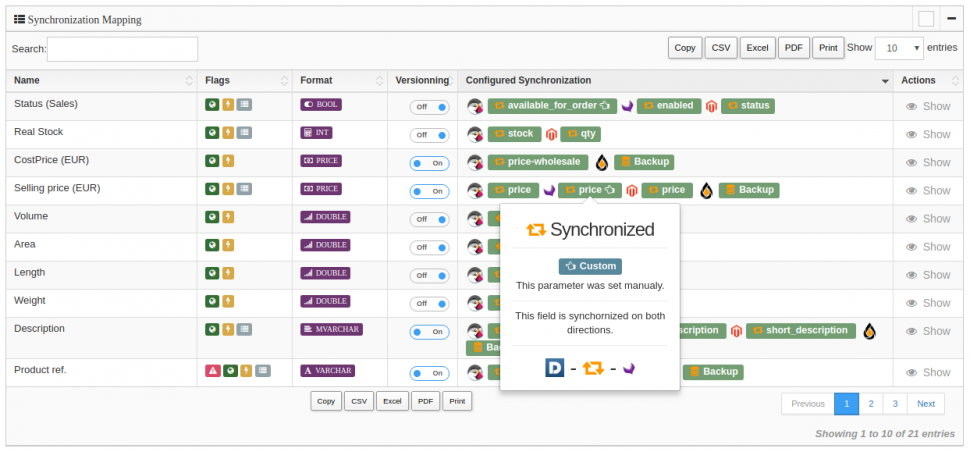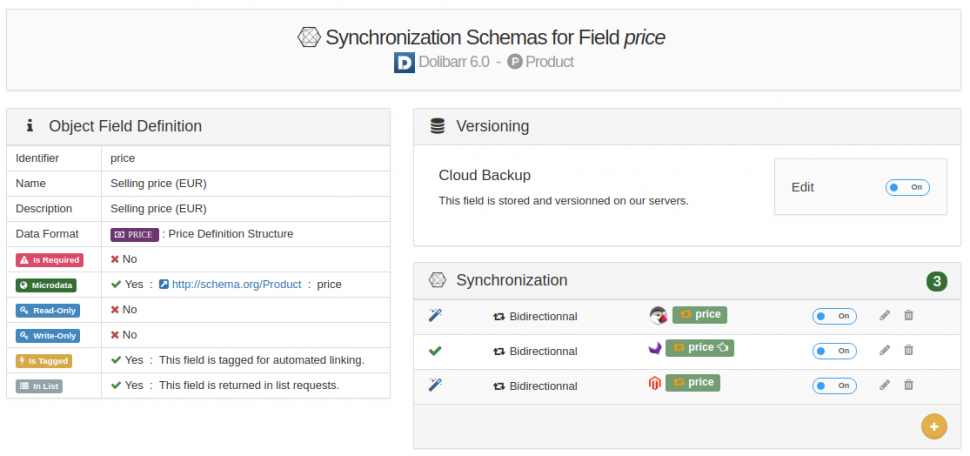Synchronization Schemes
At the heart of your synchronization
Synchronization schemes are at the center of your strategy; they define how the data shared by each of your servers is synchronized.
Each schema represents, for a given field, a synchronization operation that will be applied each time a modification is detected.
When you connect or modify a server, Splash automatically generates the best configuration , that is, it creates the set of synchronization possible schemas.
In order to adjust your configuration to your needs, you can then modify as much as you want your synchronization schemes, with no other limits than the technical feasibility of your configuration.
How to view and modify my schemas?
On each page of the data explorer, click on the "Configure" button and select the server to modify.


Configure your schemas
On this page, you can add, delete, or modify your schemas.
Manual configuration When you edit a schema, you will see this icon in the schema label. It means that this schema has been manually configured and that it must not be modified during the automatic update of your configuration (which is done every week).
Disable or Delete Schema? If you do not disable the automatic configuration of your account, do not delete your schemas, disable them. Thus, during the next configuration, Splash will not re-create them.
Synchronization modes Three synchronization modes are possible: Import | Export | Synchronization.
How to return to the default configuration?
Sometimes we have made changes and we have to go back. To return to the default configuration of a schema, nothing more simple.
- Delete the schema in question
- Refresh one of your servers
In which case add schemas?
To connect the Custom fields Most applications offer to add custom fields to your data. We know this well and that's why the most of our modules take this into account. On the other hand, we cannot guess the meaning of each of these fields! You will have to connect them manually.
To connect fields that would not be tagged the same It happens that some fields do not have exactly the same meanings, and therefore they are not tagged the same. But you can still connect them manually.
Data Versionning
Smartly selecting the fields to be archived is also part of the default information provided by your modules.
For example, there is little interest in archiving the inventory level of a product, which by definition changes on every order. On the other hand, having an archive of previous versions of the product description can get you out of complicated situations.
You can decide, field by field, to archive or not the old versions.
You will surely have observed in the data explorer that Splash stores a revision of each object? And know that up to 10 reviews can be kept in your archives.
